Ditapis dengan
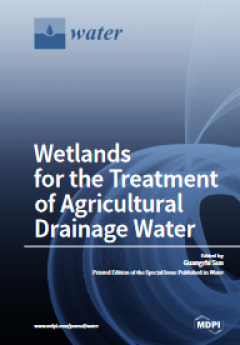
Wetlands for the Treatment of Agricultural Drainage Water
Agricultural drainage, such as runoffs from farmlands and wineries, are contaminated waters. Their management is monitored by environmental protection authorities who set targets of volume or pollutant reductions. Due to large quantities and seasonal variations, the targets are often not met, and effective management remains a problem in many parts of the world. Natural wetlands are known as th…
- Edisi
- -
- ISBN/ISSN
- 978-3-03897-209-9
- Deskripsi Fisik
- 152 hlm.
- Judul Seri
- -
- No. Panggil
- -
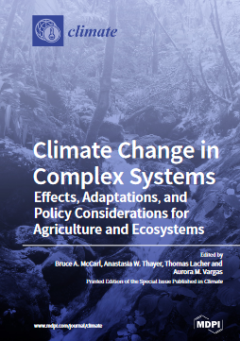
Climate Change in Complex Systems:Effects, Adaptations, and Policy Considerat…
Climate change is altering agricultural production and ecosystems around the world. Future projections indicate that additional change is expected in the coming decades, forcing individuals and communities to respond and adapt. Frequently, agriculture and ecosystems are seen as separate entities, resulting in entity-specific solutions in response to threats. Anthropogenic climate change simulta…
- Edisi
- -
- ISBN/ISSN
- 978-3-03936-943-0
- Deskripsi Fisik
- 148 hlm.
- Judul Seri
- -
- No. Panggil
- -
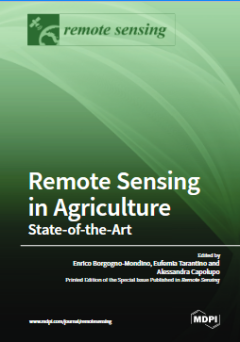
Remote Sensing in Agriculture: State-of-the-Art
The Special Issue on “Remote Sensing in Agriculture: State-of-the-Art” gives an exhaustive overview of the ongoing remote sensing technology transfer into the agricultural sector. It consists of 10 high-quality papers focusing on a wide range of remote sensing models and techniques to forecast crop production and yield, to map agricultural landscape and to evaluate plant and soil biophysica…
- Edisi
- -
- ISBN/ISSN
- 978-3-0365-5484-6
- Deskripsi Fisik
- 222 hlm.
- Judul Seri
- -
- No. Panggil
- -
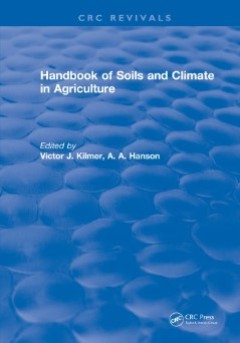
Handbook of Soils and Climate in Agriculture
This book contains Climate of the United States, Soil Classifications, Soil Physics, Soil Chemistry, Soil Microbiology, Soil Organic Matter, Soil Fertility, Fertilizers, and Plant Nutrition, Fertilizer Sources and Composition, Lime, Lime Materials, and other Soil Amendments, Soil and Water Management and Conservation, Soil and Water Management and Conservation: Wind Erosion.
- Edisi
- -
- ISBN/ISSN
- 978-1-351-07307-3
- Deskripsi Fisik
- 455 hlm.
- Judul Seri
- -
- No. Panggil
- -
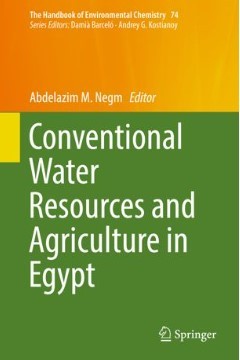
Conventional Water Resources and Agriculture in Egypt
This unique volume focuses on Egypt’s conventional water resources and the main water consumer: Egypt’s agriculture. It provides an up-to-date overview and the latest research findings, and covers the following main topics: History of irrigation and irrigation projects, Key features of agriculture, the administrative and legal framework in Egypt, Land resources for agriculture development, …
- Edisi
- -
- ISBN/ISSN
- 978-3-319-95065-5
- Deskripsi Fisik
- 679 hlm.
- Judul Seri
- The Handbook of Environmental Chemistry 74
- No. Panggil
- -
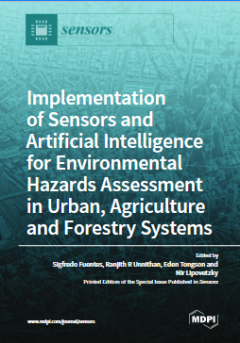
Implementation of Sensors and Artificial Intelligence for Environmental Hazar…
The implementation of artificial intelligence (AI), together with robotics, sensors, sensor networks, Internet of Things (IoT), and machine/deep learning modeling, has reached the forefront of research activities, moving towards the goal of increasing the efficiency in a multitude of applications and purposes related to environmental sciences. The development and deployment of AI tools requires…
- Edisi
- -
- ISBN/ISSN
- 978-3-0365-2905-9
- Deskripsi Fisik
- 208 hlm.
- Judul Seri
- -
- No. Panggil
- -
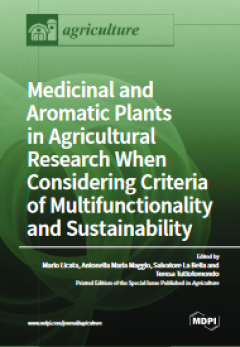
Medicinal and Aromatic Plants in Agricultural Research When Considering Crite…
Medicinal and aromatic plants (MAPs), as open-field crops, play an important role in multifunctional and sustainable agriculture as a result of their low energy requirements for cultivation and their many avenues of use, from the production of nutraceuticals, phytonutrients, and phytotherapy to land valorization. This Special Issue of Agriculture, “Medicinal and Aromatic Plants in Agricultura…
- Edisi
- -
- ISBN/ISSN
- 978-3-0365-4014-6
- Deskripsi Fisik
- 226 hlm.
- Judul Seri
- -
- No. Panggil
- -
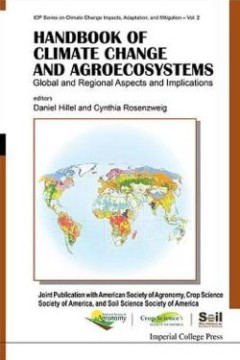
Handbook of Climate Change and Agroecosystems: the Agricultural Model Interco…
“Top agricultural scientists from around the world have taken up the challenge of sustainable agriculture, with the specific focus on integrating agronomic, climatological, biophysical and socio-economic perspectives and processes. Every chapter (of the Handbook) contributes to addressing the growing food-security challenges facing the world.”Foreword by Jeffrey Sachs, Director of the Earth…
- Edisi
- -
- ISBN/ISSN
- 978-1-78326-566-4
- Deskripsi Fisik
- 1159 hlm.
- Judul Seri
- -
- No. Panggil
- -
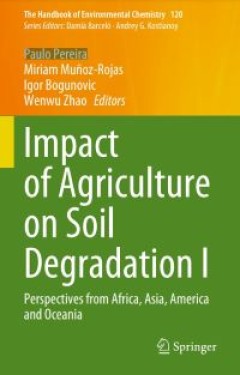
Impact of Agriculture on Soil Degradation I: Perspectives from Africa, Asia, …
This book covers the main effects of agriculture practices on soil degradation in several countries from Africa, America, Asia, and Oceania, and it elucidates the impact of chemical agents on soil quality, namely, the use of fertilizers, herbicides, pesticides, soil acidification and microplastics pollution. In these continents, a large number of the population depend on agriculture, which sets…
- Edisi
- -
- ISBN/ISSN
- 978-3-031-32168-9
- Deskripsi Fisik
- 398 hlm.
- Judul Seri
- -
- No. Panggil
- -
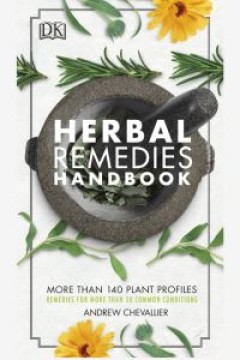
Herbal Remedies Handbook: More Than 140 Plant Profiles (Remedies for over 50 …
Discover the therapeutic properties of more than 140 medicinal herbs such as turmeric, elderflower, and ginger root with Herbal Remedies Handbook. Take charge of your health and wellness naturally with tried-and-tested plant-based home remedies. Reliable, authoritative, and accessible, it’s packed with expert advice and know-how on essential herbal remedies, including crucial safety and dosa…
- Edisi
- -
- ISBN/ISSN
- 978-1-4654-7465-0
- Deskripsi Fisik
- 290 hlm.
- Judul Seri
- -
- No. Panggil
- -
 Karya Umum
Karya Umum  Filsafat
Filsafat  Agama
Agama  Ilmu-ilmu Sosial
Ilmu-ilmu Sosial  Bahasa
Bahasa  Ilmu-ilmu Murni
Ilmu-ilmu Murni  Ilmu-ilmu Terapan
Ilmu-ilmu Terapan  Kesenian, Hiburan, dan Olahraga
Kesenian, Hiburan, dan Olahraga  Kesusastraan
Kesusastraan  Geografi dan Sejarah
Geografi dan Sejarah